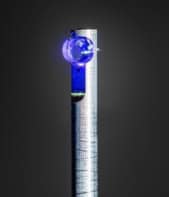We live in a relativistic world. You might think that longitude is the only factor that determines the time difference between two locations on Earth. But if you were to use the world’s most accurate atomic clocks, you would also need to take the latitude and altitude of the two locations into account. While these effects are unlikely to affect the itinerary of even the most conscientious traveller, they are crucial for measuring the stability of the world’s frequency standards.
Variations in the gravitational potential of the Earth can cause two “perfect” clocks at two different locations to differ in frequency, an effect known as the gravitational redshift. This is a direct consequence of Einstein’s equivalence principle – the principle that underpins general relativity – and means that clocks run slower the closer they are to the Earth’s surface. A second relativistic effect is due to the velocity of the clock, and, because the Earth is rotating, this velocity changes with latitude.
Now Nikolaos Pavlis from Raytheon ITSS Corporation in Maryland and Marc Weiss from the National Institute of Standards and Technology in Boulder, Colorado have computed the value of the relativistic shift for “NIST-F1” at Boulder – one of the most accurate clocks in the world (Metrologia 40 66-73).
In the July issue of Physics World Gérard Petit from the Bureau International des Poids et Mesures (BIPM) in Paris explains how measurements made with atomic clocks will eventually have to take geophysical effects into account.



